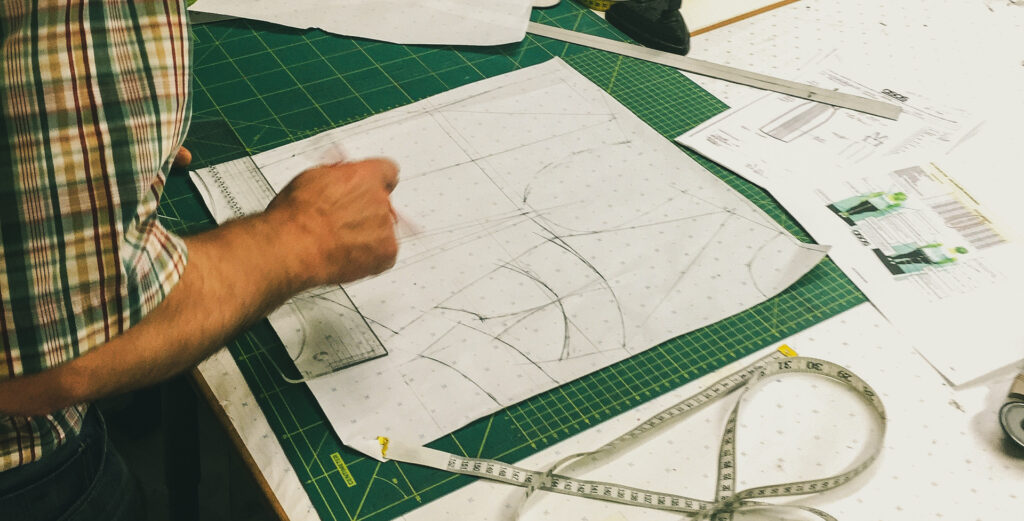
PATTERN CUTTING & TOILING
In fashion industry the process of interpretation of a design sketch into paper or a card pattern is known as pattern cutting. This process also involves the sewing of a toile, a toiling process. Toile is the prototype of the finished garment usually made out of calico or a cheap fabric to be able to test the design and make it perfect before the pattern can be signed off for sampling. This helps to develop the paper pattern properly.
There are several methods to create a pattern. For instance, it can be manually drafted by hand on the pattern cutting paper usually referred to as a dot and cross paper or it can be created digitally by using a pattern design software like for example Gerber Accumark, Lectra, Optitex and many more other softwares. But regardless of what method is being used it all begins from a sketch or a CAD drawing and the fit model’s body measurements to make it to the required size. Once the pattern was made the next step would be to make a toile and it would be best to select the fabric similar in weight and quality to the actual fabric that you plan to make your sample in. For instance, if you were planning to make a pure cotton shirt then you should consider using a polyester cotton fabric as it would exhibit the look of a cotton shirt and will save you money as the polycotton is marginally cheaper than the real cotton.
By making a toile you can quickly see the fitting issues and immediately make changes to the pattern to improve the fit. Also toiling should not involve things like facings, collars, pockets, zips, button or buttonholes. You can just cut the openings and pin it where required, draw the positions of the zips and buttons and the buttoholes. In most cases you can get away with just toiling and fitting the bodice, especially if you are short of time.

